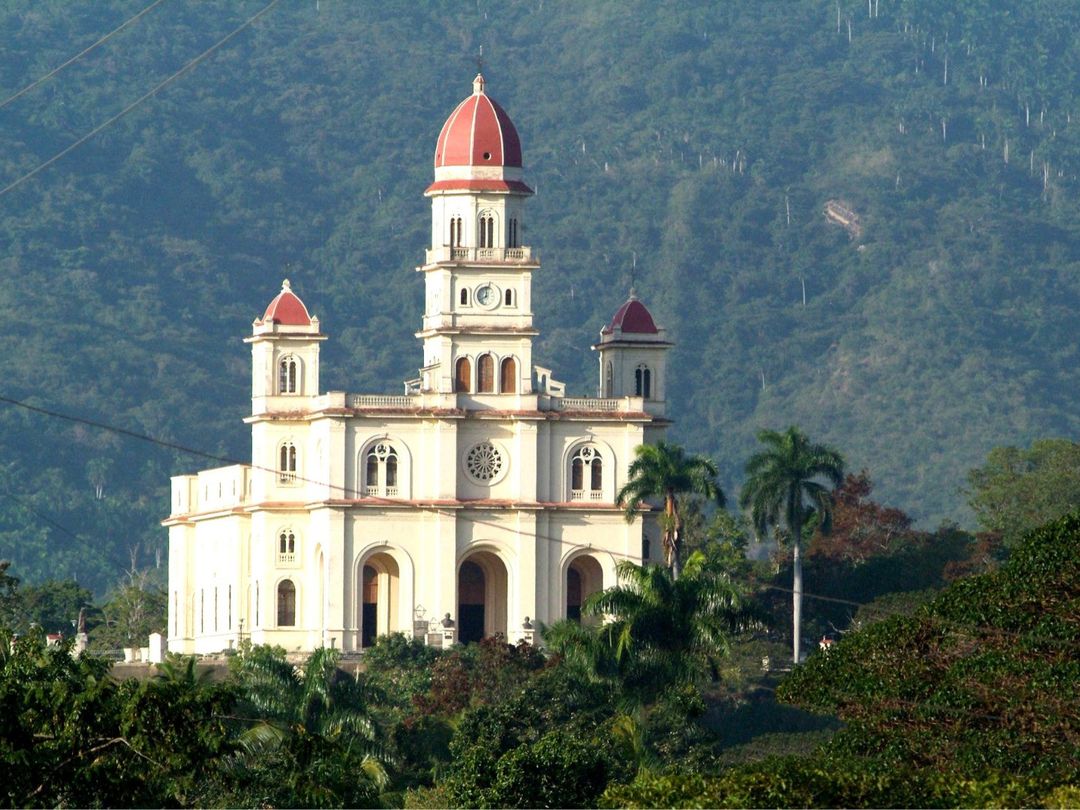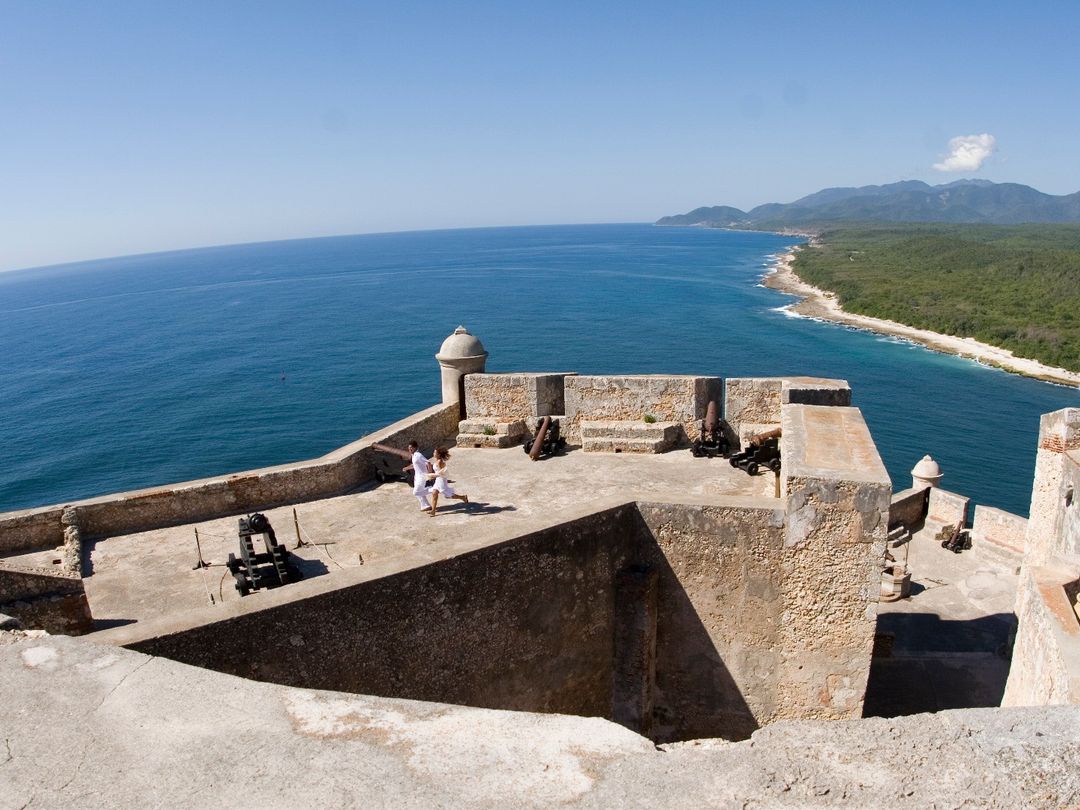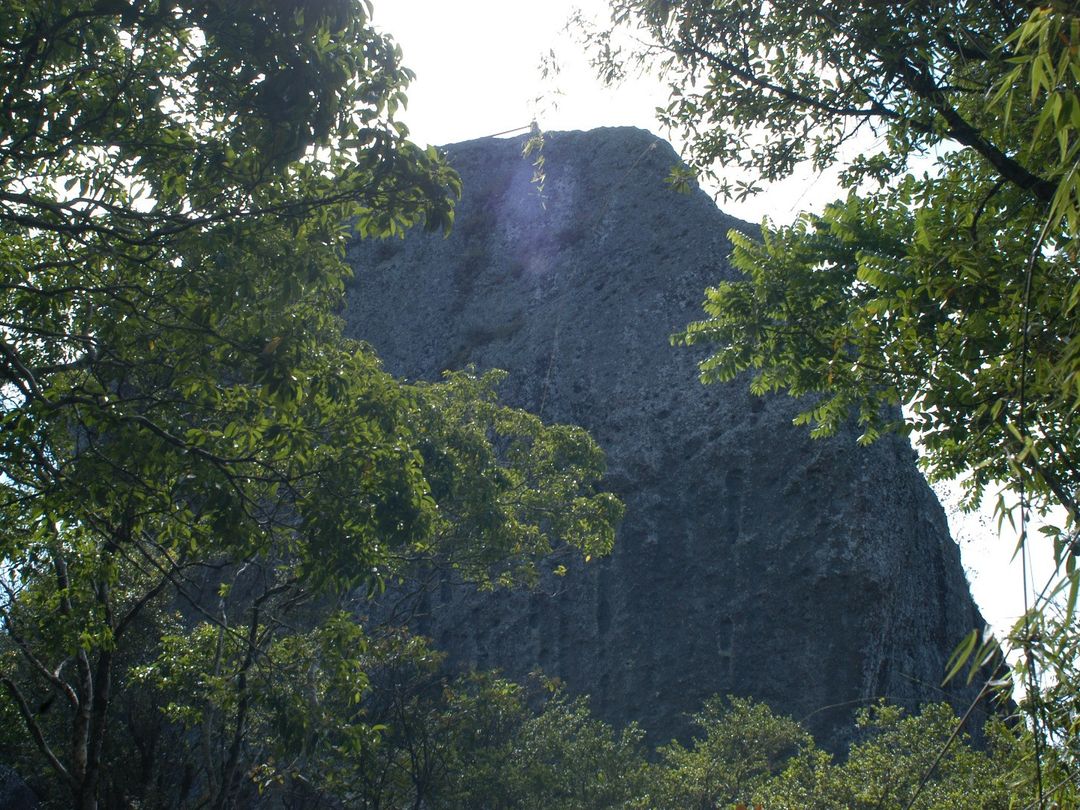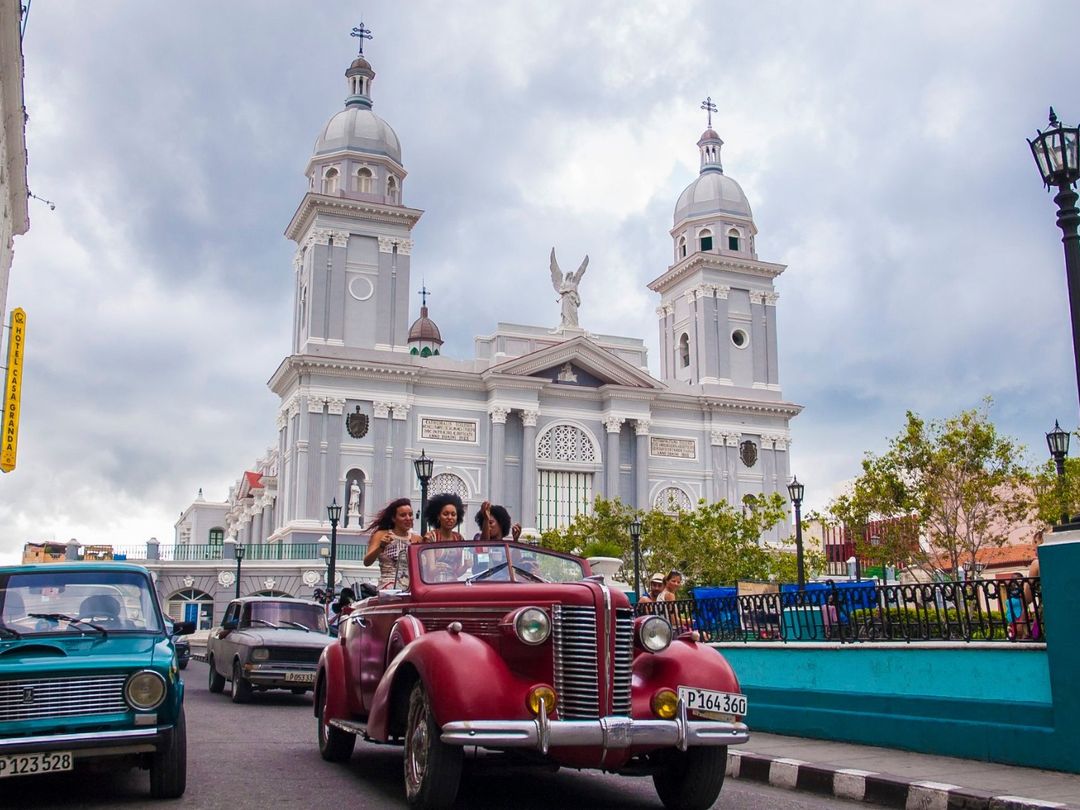- Home
- Day Tours
- SANTIAGO DE CUBA
- Scuba Diving in Wrecks of the Hispanic - Cuban and North American War of 1898. "CRISTOBAL COLÓN BATTLESHIP CRUISE".
Scuba Diving in Wrecks of the Hispanic - Cuban and North American War of 1898. "CRISTOBAL COLÓN BATTLESHIP CRUISE".

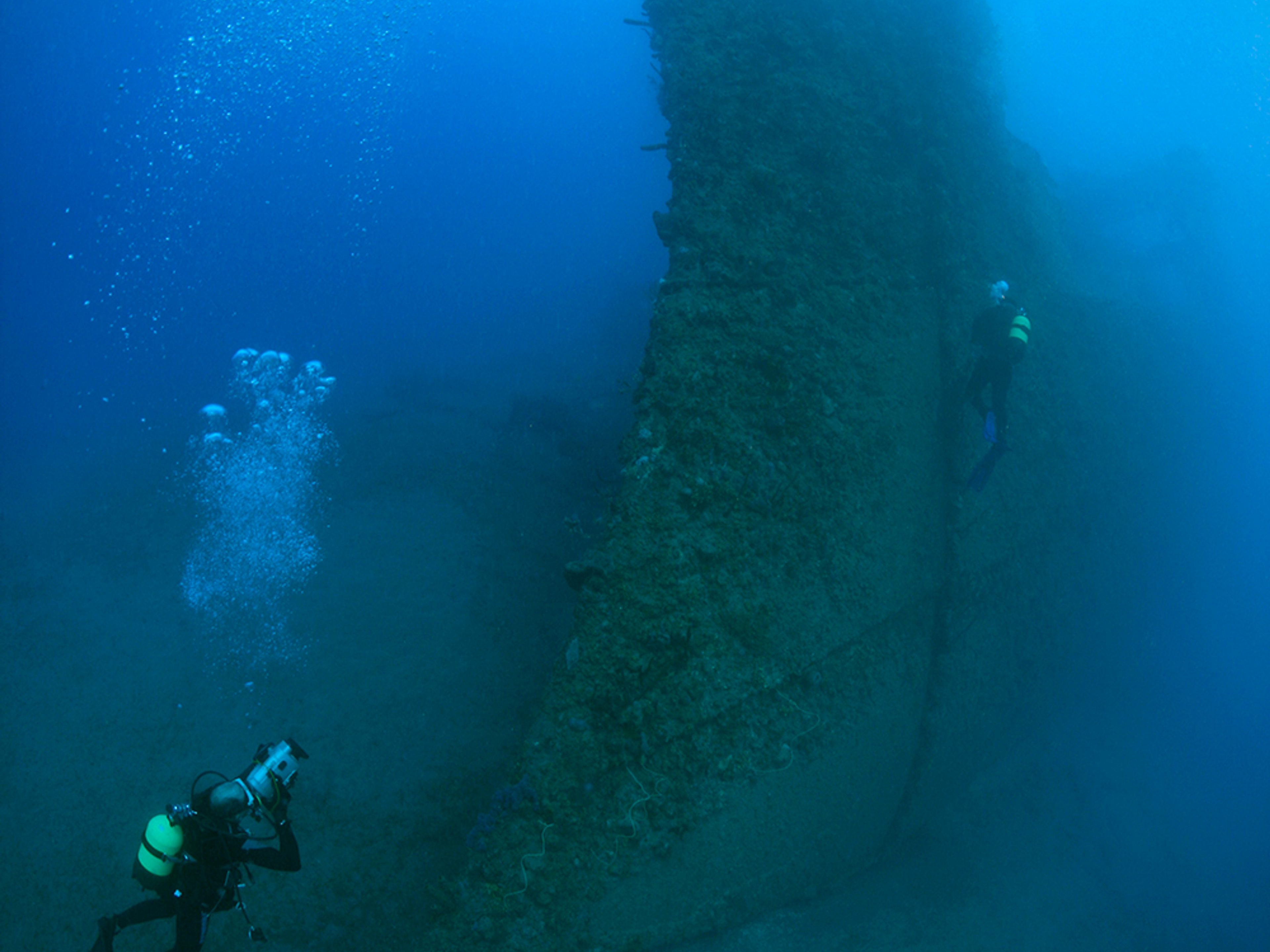
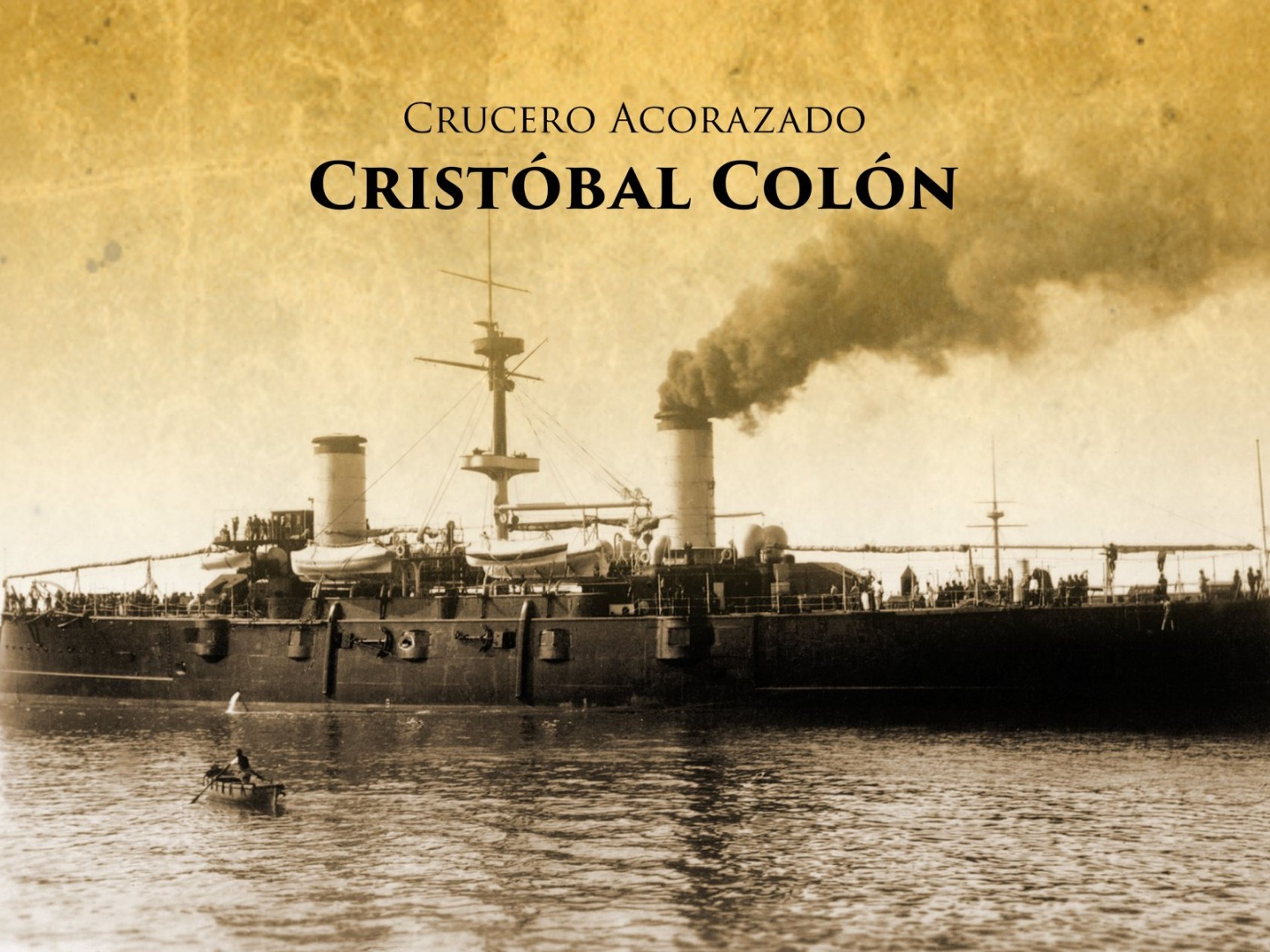

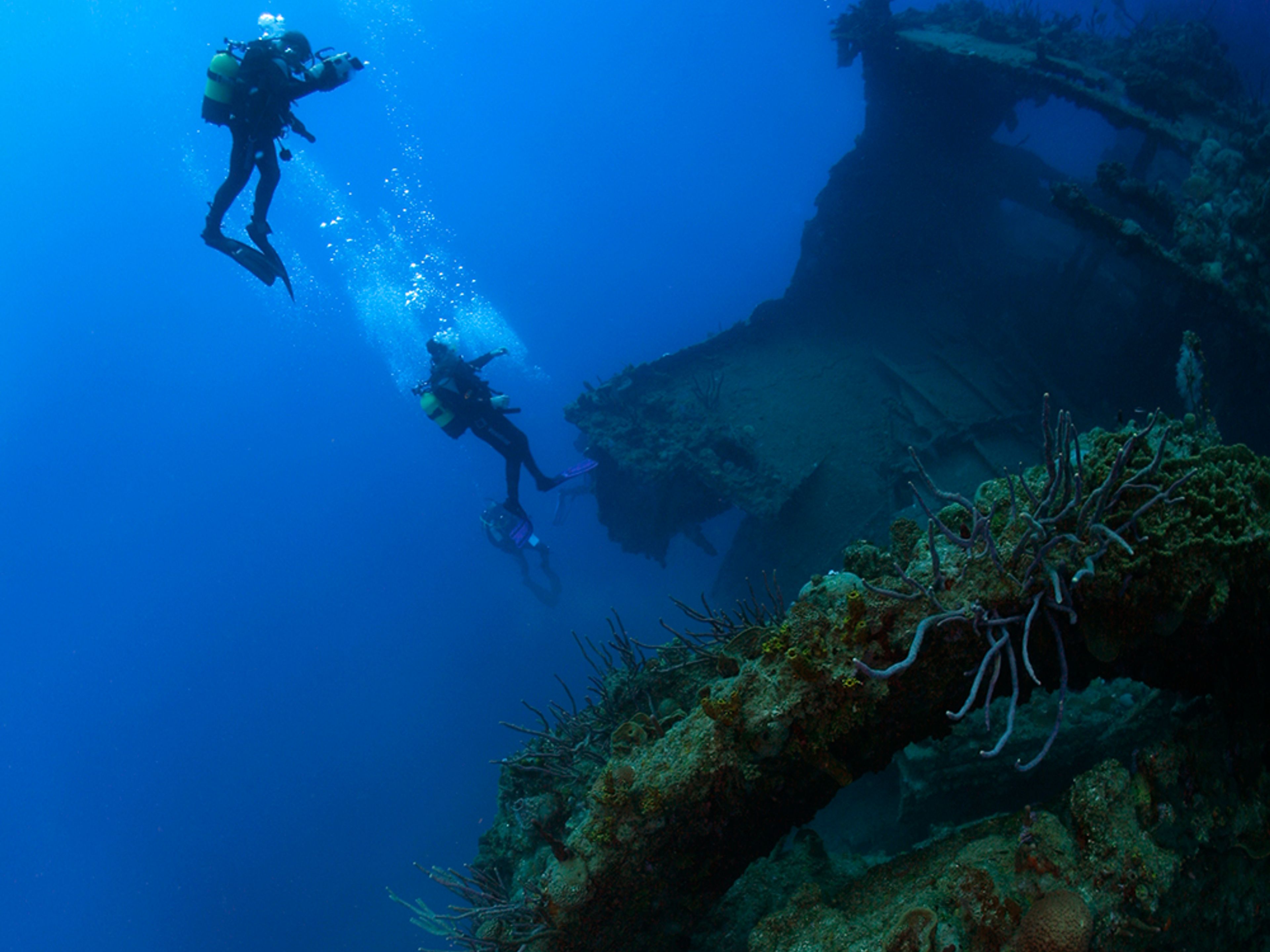
Scuba Diving in Wrecks of the Hispanic - Cuban and North American War of 1898. "CRISTOBAL COLÓN BATTLESHIP CRUISE".
“Archaeological Park of the Natural and Cultural Underwater Heritage Battle of Santiago de Cuba”. Declared a National Monument in 2015.
General description:
It consists of seven archaeological sites (Playa Siboney, Las Cuatro Bocas, Playa Mar Verde, Rancho Cruz - Buey Cabón, Ensenada de Juan González, Aserradero and Playa La Mula), whose environmental and archaeological characteristics differ from one site to another due to the very demarcation of the sites along the southeastern coastal strip of the province of Santiago de Cuba. It covers a territorial extension of some 64,824 nautical miles, equivalent to some 120,051 km along the coast from Siboney beach, belonging to the municipality of Santiago de Cuba, to "La Mula" beach, referring to the municipality of Guamá.
The area of the coastal strip in the southeastern part of the province of Santiago de Cuba was the scene of one of the most transcendental naval events in the history of humanity. The bloody and uneven Naval Battle, which culminated in the sinking of the fleet of Vice Admiral Pascual Cervera y Topete, put an end to Spanish colonial rule in America, and with this gave way to the rise of the most powerful empire in the history of mankind, the United States of America.
The vestiges of that naval crusade make up what is currently known as the Underwater Archaeological Park "Naval Battle of Santiago de Cuba". This is made up of seven archaeological sites where the wrecks linked to the landing and the naval conflict lie, as well as all those material evidences belonging to the ships that are related in one way or another to the events, such as: masts, masts, remains of the rigging of the mastheads, ironwork, parts of the artillery sites, thick and medium caliber projectiles, flushes, balusters and mechanisms of the propulsion system. Similarly, among the remains that lie on the seabed, in more than a century of rest and biological activity, special ecosystems have been articulated where the sessile fauna and marine flora have merged with the wrecks in a symbiotic entity that protects them mutually.
For many years these sites have been of special attraction for researchers, archaeologists, divers and tourists in general, justified not only by the transcendental historical value of the famous Battle of the Sea, but because it is a real privilege to enjoy today the dives in these wrecks located in an environment of spectacular beauty, in which the Sierra Maestra mountain range bursts into the Caribbean in an abrupt and irregular manner, cut by canyons and riverbeds and estuaries that extend into pebble-covered deltas and low-lying areas, forming mangrove-covered wetlands under the shelter of virgin inlets and coves: ecosystems that support incredible biological diversity.
It is a privilege to learn about history through these wrecks, exceptional witnesses to the events of the Naval War of 1898, and to decipher the language they bequeath us, a treasure of the Underwater Cultural Heritage, which preserves the right of future generations to enter a transcendent page of universal history.
ARCHAEOLOGICAL SITE: “PLAYA LA MULA”. Wreck: Battleship Cruiser “Cristóbal Colón”.
- Site: La Mula Beach. West of the mouth of the Turquino River, municipality of Guamá, 50.4 miles from Santiago de Cuba.
- Municipality: Guamá.
- The Battleship Cruiser "Cristóbal Colón" is located around the La Mula settlement, west of the mouth of the Turquino River and 50.4 nautical miles from Santiago de Cuba, about 80 meters from the coast and between 12 and 37 meters deep.
Historical antecedents:
-
In 1895, Spain, aware of its enormous naval inferiority, made a last attempt to strengthen itself, although as we know, in vain. The project to reinforce the navy aimed to acquire a battleship and two armoured cruisers, its construction was commissioned to other navies and the operation was supervised by the Minister of the Navy for Restoration, Admiral Berenguer.
-
In practice, only one battleship was purchased, the Cruiser Battleship Christopher Columbus, which would build the Gio Ansaldo & Cia. at the Ansaldo Sestri Ponenti shipyard in Genoa, for the Italian Regia Mariana. Spain paid 690,000 pounds sterling, the duration of the construction work was 6 months. The design of the most modern and efficient battleship of the moment was in charge of Benedetto Brin, under the supervision of Naval Engineer General Edoardo Masdea.
-
After its acquisition, the Spanish government renamed it "Christopher Columbus", curiously enough as the famous Genoese admiral who 404 years earlier had discovered the American continent for the Spanish Crown.
-
The battleship "Christopher Columbus" was launched after several attempts on September 16, 1896, at 9 a.m. in the port of Genoa. The ship was delivered to the Spanish government on May 19, 1897, the same day of the following year it would arrive at the coast of Santiago de Cuba, its final destination.
-
The battleship "Cristóbal Colón" was a novelty for her time, with her 24 Niclause boilers, with 13,000 horsepower, capable of moving a steel mass of 6840 tons of displacement and achieving the impressive speed, for the time, of 21 knots.
-
The battleship "Cristóbal Colón", led by Commander Emilio Díaz Moreu, left the Santiago de Cuba bay channel in third place, after the flagships Infanta María Teresa and Vizcaya. At around 12:30 pm, Commander Díaz Moreu was in a situation of facing a combat on the high seas, in numerical inequality and without his battery of large-caliber cannons, which would mean the total loss of his 543 crew members, which would be an unnecessary and totally useless sacrifice.
-
The armored cruiser "Christopher Columbus" sank on July 3, 1898, at 13:25 hours; after its Commander decided to make a bow to the coast and quickly disembark his crew, open the bilge records, the last maneuver aimed at preventing it from falling into enemy hands during the naval combat of the Spanish-Cuban-American War.
-
The armored cruise ship "Christopher Columbus" is one of the best preserved in the world, considering its proximity to the coast and its more than 110 years submerged in open sea and tropical waters. The armored cruiser "Christopher Columbus" is submerged in a deep area, despite its proximity to the coast. Some objects from the ship, which are in our country, are exhibited in the museums of the Spanish-Cuban-American War, the Morro Castle and the Marine Museum in the Baconao Park aquarium. Other pieces are part of some private collections or are exhibited in museums abroad (United States and Spain).
TECHNICAL CHARACTERISTICS OF THE SHIP “Cristóbal Colón”:
- Name of the wreck: “Cristóbal Colón”.
- Class: "Giuseppe Garibaldi".
- Type of vessel: 1st class battleship cruise.
- Flag: Spain.
- Date of commissioning: September 16, 1896.
- Shipyard: “Sestri Ponente” de Ansaldo, Génova, Italy.
- Launch date: July 24th, 1889.
- Commander: Captain Emilio Díaz Moreu.
- Crew members: 543 men.
- Length: 100 metres.
- Beam: 18,20 meters.
- Strut: 12.19 meters.
- Draft: 7.75 meters.
- Displacement: 6.840 tons.
- Maximum speed: 20 knots.
- Range at low power: 8 300 miles (nautical).
- Type of bow: Reverse Launch.
- Decks: Steel and wood.
- Rudder: Aft, spade outside the transom with shaft running to deck, driven by a servo motor.
- Shielding: Stainless steel 120 to 150 mm, two thirds of the length.
- Shielding: Deck 25 to 30 mm.
- Barbets: 150 mm.
- Type of machinery: 2 vertical triple expansion machines.
- Type of feeding: Mineral coal.
- Power : 13 000 CV.
- Boilers : 14 "Niclause" boilers.
- Propulsion : 2 propellers.
- Masts: 1 mast.
- Large caliber artillery: 2 gun turret bases 254 mm "Amnstrong", 152 mm guns: 10 pieces.
- Rapid fire artillery: 120 mm guns (rapid fire): 6 pieces. 10 Nordenfelt 57 mm guns (rapid fire).
- Medium calibre artillery: 10 guns Hotchkis Revolvers of 37 mm.
- Maxims" machine guns: 2 pieces.
- Torpedo launchers: 5 tubes with 365 mm torpedo launchers.
Diving services included:
- Basic diving equipment,
- Compressed air tank.
- Leaded belt.
- Assistance of a guide instructor with international certificate, who will make an informative briefing of the immersion to be done.
- Boat that takes them from the diving center to the diving points (In principle the dives leaving from the nautical base of Campismo Rio La Mula will be done by diving boat when the excursion exceeds 10 divers).
The service includes:
- Diving equipment, air tank, belt with weights, the assistance of an internationally certified instructor guide, who will do a briefing of dive to be made, and the use of the boat that leads from the dive center to dive sites.
- Professional diving instructor service for every 6 diving clients.
Not included:
- Transfer service to and from the hotels to the Marina Marlin Santiago de Cuba.
- Tips.
Very important notes:
- All clients must be over 12 years old (between 12 and 18 accompanied by a guardian), present their diving certification and valid passport.
LIABILITY WAIVER AND EXPRESS ASSUMPTION OF RISKS FOR THE PRACTICE OF DIVING BY THE CLIENT:
- Clients must sign a liability waiver to be able to practice diving activities in Marinas Marlin dive centers where among other points:
- The CLIENT acknowledges that snorkeling, freediving and scuba diving are potentially hazardous activities that carry a risk of serious injury and/or death and/or property damage and agree to assume all risks associated therewith.
- The CLIENT acknowledges that compressed air diving carries some inherent risks: decompression sickness, embolism or other hyperbaric injuries requiring treatment in a hyperbaric chamber may occur and that the CLIENT expressly assumes all such risks.
- The CLIENT must comply with the ship's safety guidelines and diving safety guidelines, in addition to complying with local regulations and legislation.
- The CLIENT agrees and certifies that he/she is fully aware of and expressly assumes all such risks and all other risks involved in conducting such boat trip, shore excursions and dives, conducted as leisure dives or as part of a dive class.
- The CLIENT agrees that they are in good physical and mental health for diving, that they do not suffer from any medical condition contraindicated for diving, that they will not dive under the influence of alcohol, nor under the influence of any drug contraindicated for diving. In case of taking any medication, the CLIENT declares that he/she has consulted a doctor and has the authorization to dive in the conditions of this activity while under the influence of the medication/drug.
- The CLIENT must declare: That ___ yes/no ___ has a personal insurance policy (covering the diving activity). If yes, he/she must specify which company is contracted and the policy number.
- The CLIENT declares that he/she releases the dive center from responsibility for any incident that may occur to the client, without being attributable to the dive center or its auxiliary staff. The CLIENT declares that he has been duly informed by the dive center staff and is fully aware of the risks of accidents involved in diving activities, which he assumes full responsibility and declares that if he or anyone, including his heirs or representatives, should be affected, they will not establish any claim against the dive center, its officers, instructors or employees, nor against the AGENCY.
Difficulty degree: Medium.
Distance to cover in the tour (Roundtrip): 40 km approximately.
Approximate tour duration (total): 3 hours approximately.
Very important note: It is mandatory for clients to present their official diving certification.
Very important note: For safety reasons and protection of underwater heritage, customers may never directly touch the wreckage of a shipwreck and must strictly follow the instructions given by the diving instructors.
Very important note: Although in the 27 meters (bow of the wreck) a dive can be carried out within the safety curve up to a time of 25 minutes, when you have cylinders of great volume it is important to be aware of the time, the decompression stops and the orientations of the instructor or guide (in the case of tourists and amateurs); since it is relatively frequent that some amateurs, absorbed with the impressive panorama, forget the indispensable safety norms.
Very important note: With the sea slightly moved it becomes dangerous the entrance and exit from the beach, by the frequency and intensity of the waves that break the stone slope, the possibility of falls and breakage of the equipment; in addition to possible blows and physical damages to assistant and foreign divers. It is important to point out that with the sea moving it is practically impossible to access from land.
- Recommended: light clothing, swimsuit, towels, sunglasses, hat, sunscreen and photographic camera.
- We recommend that the client can bring their own diving mask.
- The client can bring his complete diving equipment if he wants to.
- We recommend that the client can bring his/her personal dive computer.
- We recommend that the client can bring one or more bottles of mineral water to stay hydrated as well as light foods rich in protein or fruit.
More Information
- 4.00 hrs
- 9:00 hrs
- Tour guide included
- Children not allowed
- Offered inSpanish and English
Options and Availability
Collective diving tour (2 dives)
Diving tour with professional diving instructor service in several languages and (2 dives). Transportation service by the client. (Clients must have transportation to include the instructor and the equipment).Policies and Conditions
- The boat is shared.
- A minimum of 5 divers is required for the excursion. Holiplus will reconfirm 48 hours before the departure of your tour. If the provider decides to cancel, for not meeting the minimum required amount of passengers, Holiplus will offer an alternative tour or fully refund cost of your trip.
- Transportation not included in the services of the diving excursions in Santiago de Cuba. The client must arrive at the Marina Marlín in Punta Gorda by his own means 30 minutes before the indicated time of the excursion.
- The excursion can be cancelled in an unexpected way if the general weather conditions and especially in the sea advise it. This does not imply any responsibility or penalty for the agency and the marina company offering the service. In principle we will try to change the date of the excursion for the following days when the conditions improve. If this is not possible, we will proceed to refund the total value of the excursion paid by the client previously.
- The client must present a valid diving certificate issued by an internationally recognized diving organization.
- The client must sign a waiver of responsibility for diving as a risky activity, releasing the agency and the marine company offering the service from any legal responsibility, before leaving for the excursion.
Cancellation Policy
- In case of cancellation up to 72 hours before the departure time of the excursion, a penalty of 10% of the excursion fare will be charged.
- Regarding cancellations made between 72 and 24 hours before the departure time of the excursion, a penalty of 50% of the excursion fare will be applied.
- Cancellations reported within 24 hours before the departure time and No-Show (no presentation at departure time), a penalty of 100% of the excursion fare will be applied.
- Booking fees and credit card surcharges cannot be refunded in case of cancellation.
